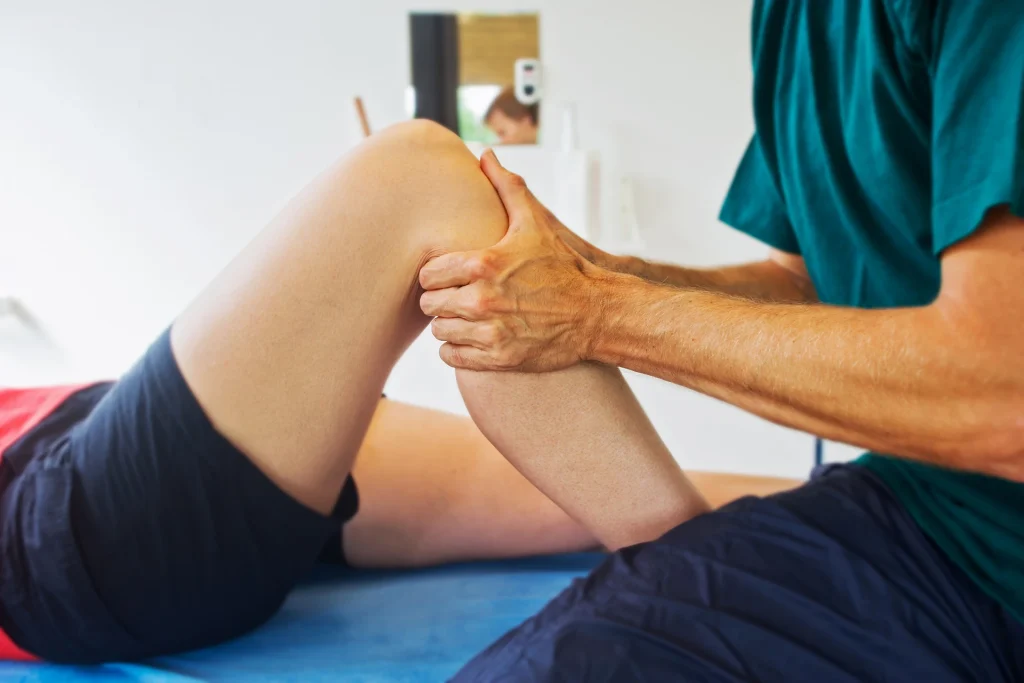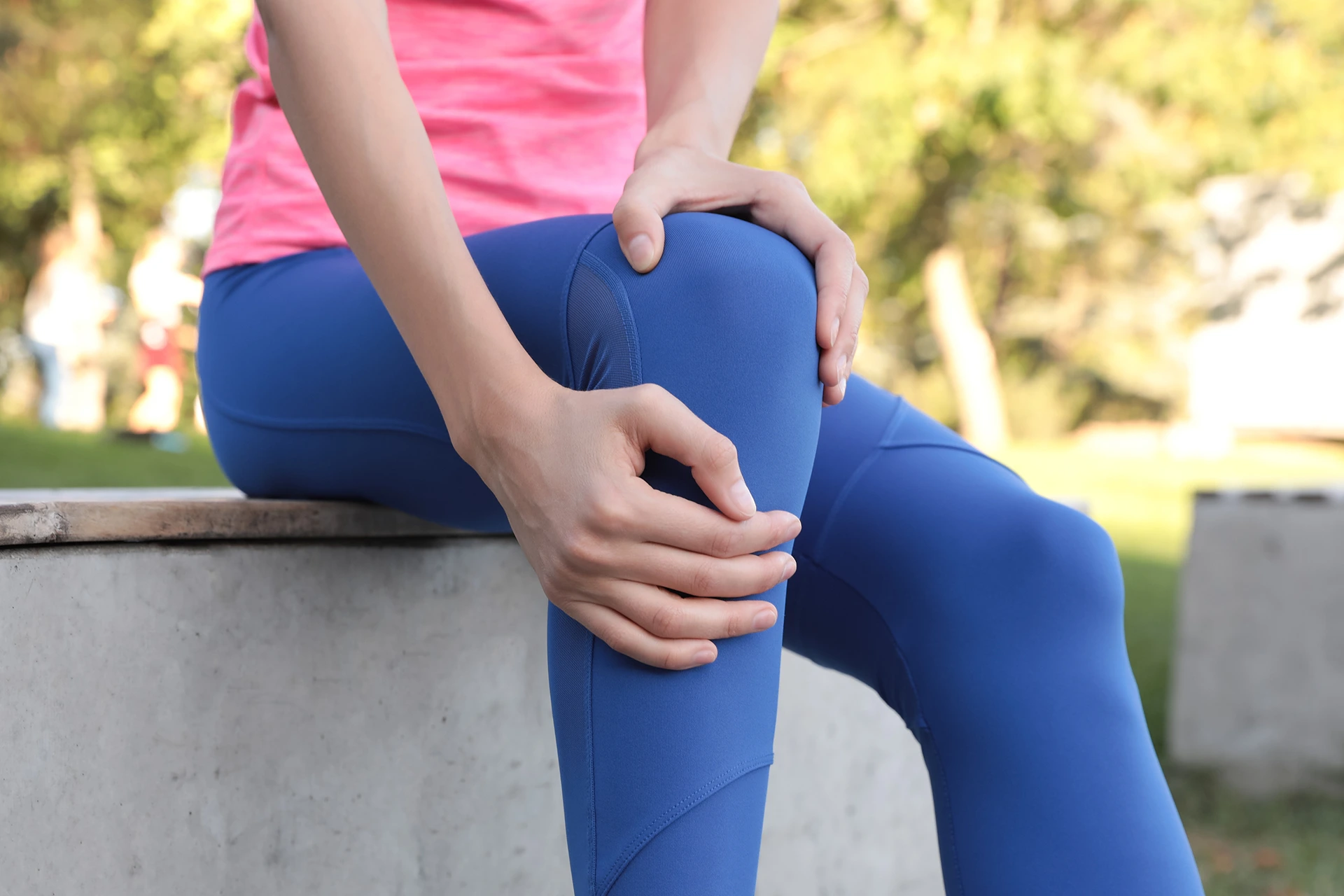The Relationship Between the Sciatic Nerve and Knee Pain, and How to Manage It
Sciatica is an all too familiar source of radiating pain for many people. Often starting in the lower back and shooting down the leg, sciatic nerve pain can be debilitating. But can the effects of sciatica extend all the way to the knees? Many sufferers of knee pain are surprised to learn that their achy knees may actually be a symptom of underlying sciatica.
However, it’s important to understand the connection between sciatica and knee pain, and how to differentiate the symptoms. In this article, we’ll explore the intricacies of how sciatica impacts the knee, the causes and symptoms, and most importantly, the various treatment options available to manage this pain.
Understanding Sciatica
Sciatica refers to symptoms caused by irritation or compression of the sciatic nerve roots in the lower back. The sciatic nerve is the largest and longest nerve in the human body, originating in the lower back and running through the buttocks and down the legs.
The most common causes of sciatica include:
| 1 | Spinal stenosis – Narrowing of the spinal canal that compresses the spinal cord and nerves. |
| 2 | Degenerative disc disease – Gradual breakdown of the intervertebral discs causing herniation or bulging of the disc. |
| 3 | Spondylolisthesis – Forward displacement of one vertebra over another. |
| 4 | Piriformis syndrome – Compression of the sciatic nerve by the piriformis muscle in the buttocks. |
| 5 | Spinal injury or trauma |
| 6 | Pregnancy – Added weight and pressure on the spine. |
When the sciatic nerve roots get compressed or inflamed, it results in sciatica and its trademark symptoms of radiating leg pain, numbness, and tingling sensations.
The Sciatica-Knee Pain Connection
The sciatic nerve runs down the back of each leg to the foot and controls most of the muscles in the lower leg. So how does it connect to knee pain?
Since the hamstring muscles behind the thigh originate in the lower back and are innervated by nerves exiting from the spine, any issues like muscle tightness or spasms here can cause referred pain down the leg via the sciatic nerve. Tight hamstrings are a common cause of sciatica-related knee pain.
In addition, compression of the nerve roots in the lumbar spine can radiate pain, weakness, and numbness from the lower back all the way to the knee and below. Inflammation of the nerve root due to conditions like spinal stenosis or disc herniation places pressure on the sciatic nerve, leading to pain that travels down the leg.
The piriformis muscle located deep in the buttocks can also irritate the sciatic nerve if it goes into spasms. This muscle assists in external rotation of the hip joint. Piriformis syndrome causing sciatic nerve compression can radiate pain into the back of the thigh and knees.
Differentiating Between Typical Sciatica Symptoms and Knee Pain
While sciatica can cause pain around the knee joint, it is important to distinguish it from typical knee pain. Here are some differences in the symptoms:
| Sciatica pain | Knee pain |
| Starts from the lower back or buttocks and radiates down the leg | Focused only around the knee region rather than shooting down the leg |
| Feels like a sharp, shooting, tingling, or burning pain | Leads to joint stiffness, difficulty moving the knee |
| Worsens with sitting, coughing, sneezing | Causes swelling, redness, warmth around the knee joint |
| Causes weakness, numbness in leg and foot | Results in tenderness and pain when touching the sides or back of the knee |
| No swelling or inflammation around the knee joint | Worsens with activities like walking, squatting, climbing stairs |
Causes of Sciatica-related Knee Pain
While sciatica itself results from compression of the nerve roots in the lower back, there are some specific causes that can create symptoms of sciatic nerve pain extending to the knees:
- Tight hamstring muscles can put extra strain on the knee when they pull on the knee joint. This can irritate the sciatic nerve and cause pain behind or around the knee.
- Piriformis syndrome resulting from spasms or tightness in the hip external rotator can compress the sciatic nerve and cause pain radiating down to the knee.
- A herniated disc or bone spur in the lumbar spine causing nerve root compression can radiate pain via the sciatic nerve route to the back of the knee.
- Imbalances or poor movement patterns that increase strain on a particular side can lead to sciatic and knee pain on the same side.
Symptoms to Look Out For
Some common symptoms that indicate sciatica-related knee pain include:
- Pain behind the knee in the popliteal region radiating down the calf muscle. This indicates compression of the tibial nerve, a branch of the sciatic nerve.
- Tingling, numbness, or weakness on one side of the lower leg, extending from the back of the knee to the calf or foot. This suggests sciatic nerve irritation.
- Difficulty bending the knee, knee stiffness, pain in back of the knee joint, indicating hamstring involvement.
- Inner knee pain that extends from the low back to the knee, suggesting compression of the peroneal nerve, a component of the sciatic nerve.
- Pain below the knee and weakness or numbness in the foot indicates sciatic nerve impingement as the nerve travels down the leg.
Impact of Knee Injury on Sciatica

Existing knee problems like arthritis, anterior cruciate ligament (ACL) or meniscus tears, patellofemoral pain, tendonitis etc. can worsen the effects of sciatica. However, can a knee injury actually cause sciatic nerve pain?
Direct injury to the knee joint does not cause sciatica, but it can potentially aggravate symptoms of existing lower back issues. Here’s how:
- Falls or trauma to the knee region can put strain on the lower back and compress the vertebrae. This could pinch the sciatic nerve roots and worsen sciatica.
- Favoring one leg while walking due to a knee injury can create muscle imbalances through overcompensation and affect gait and posture. This abnormal movement pattern can indirectly irritate the sciatic nerve.
- Limiting activity due to a knee problem may weaken back and core muscles. This increases susceptibility to back injury and sciatica.
- Osteoarthritis causes bony spurs that narrow the space available for the sciatic nerve in the spinal canal. Knee osteoarthritis could indicate similar degenerative changes in the spine.
So while a knee injury doesn’t directly compress the sciatic nerve, it can contribute to or aggravate sciatica symptoms through its effects on muscles, movement patterns, and exacerbating back conditions.
Management and Treatment Options
Effective management of sciatic nerve pain involving the knee requires an accurate diagnosis, targeted treatment, and a multifaceted approach. Here are some key methods:
| Treatment | Description |
| Physical therapy | Stretches, exercises to strengthen back and core muscles, soft tissue mobilization, postural correction are mainstays of PT for sciatica and related knee pain. |
| Medications | Anti-inflammatory drugs, muscle relaxants, neuropathic medications help relieve pain and inflammation. Corticosteroid epidural injections can provide targeted nerve root pain relief. |
| Alternative therapies | Chiropractic care, acupuncture, massage therapy help reduce nerve compression and muscle tension. |
| Surgery | For severe sciatica that doesn’t respond to conservative treatment, microdiscectomy or laminectomy might be considered. |
| Activity modification | Avoiding aggravating activities, maintaining proper posture, limiting sitting and using ergonomic chairs and desks. |
| Cold and/or heat therapy | Ice packs reduce inflammation while heating pads relieve muscle tension and spasms. |
| Braces | Knee braces can provide stability and support to the joint while lumbar braces offer extra lower back support. |
The key is to diagnose the cause of both sciatica and knee pain using imaging tests, neurological assessments, and orthopedic evaluation. Multimodal treatment including physical therapy, medication, and bracing helps manage symptoms.
Preventive Measures and Daily Life Adjustments
Making certain lifestyle modifications and daily adjustments can go a long way towards preventing and managing sciatica and associated knee pain:
- Build core and back muscle strength through targeted exercises to support the spine.
- Practice proper posture when sitting, standing and lifting to reduce spinal compression.
- Apply ice and do gentle sciatica stretches in the morning to relieve pain.
- Use good lifting techniques – keep back straight and lift with the knees bent.
- Wear comfortable, supportive shoes with shock-absorbing soles.
- Maintain ideal body weight to minimize pressure on the lower back and knees.
Conclusion

Sciatica and knee pain often coexist due to the underlying connection through the sciatic nerve route. Determining whether knee pain stems from true knee joint issues versus radiating sciatica symptoms requires a thorough medical evaluation and tailored treatment plan. A combination of physical therapy, anti-inflammatory medication, braces, and activity modification can help manage sciatic nerve and knee pain.
Listening to the body’s warning signs and avoiding aggravating activities allows for continued mobility. Remaining active through low-impact exercise accents recovery. Ultimately, building core and leg muscle strength, maintaining proper posture and biomechanics, losing excess weight, and proactively reducing stress will help prevent and alleviate pain.
Call to Action
If you’re struggling with persistent knee pain that radiates from your back down your leg, Kaly can help. Use our platform to instantly connect with licensed physiotherapists and spine specialists who can properly evaluate your symptoms via video chat. Get personalized treatment plans, exercise recommendations, and advice on braces, medication, or lifestyle adjustments tailored to your needs. Don’t wait to seek guidance on managing sciatica and knee pain – take control of your health and mobility today with Kaly’s convenient virtual care options. Our network of qualified specialists is ready to diagnose the cause of your pain and get you on the path to recovery through customized telehealth visits.
